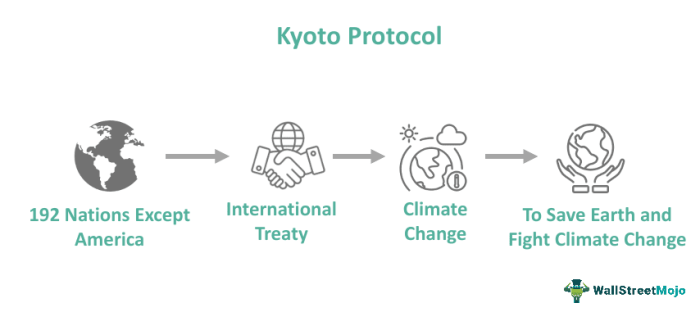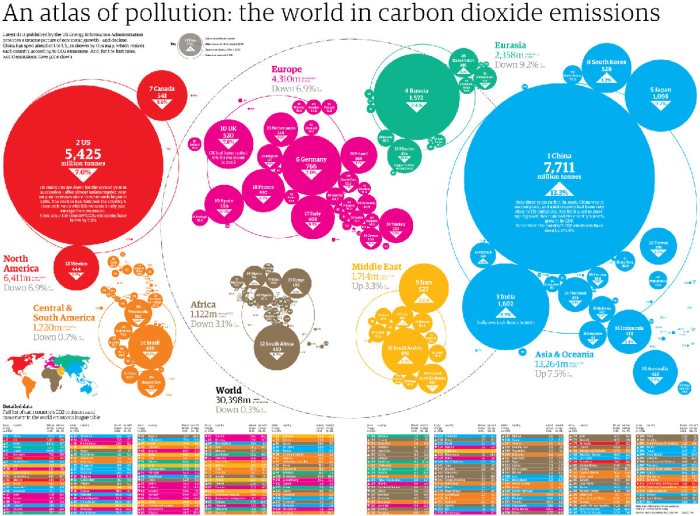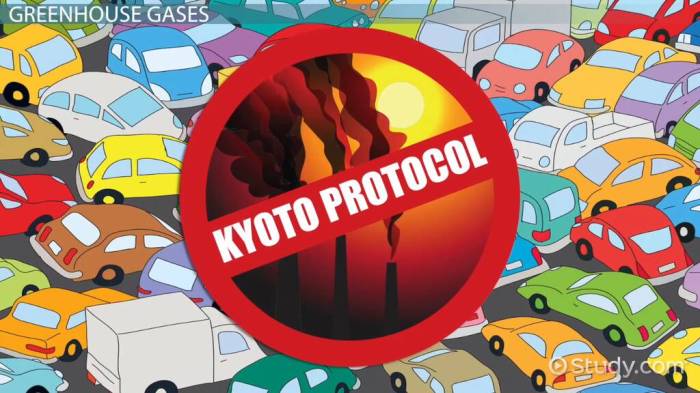Choose the statement about the kyoto protocol that is false – The Kyoto Protocol, adopted in 1997, marked a significant milestone in the international effort to address climate change. However, its implementation and effectiveness have been the subject of ongoing debate. This article examines various statements about the Kyoto Protocol, separating fact from fiction to provide a clearer understanding of its impact and legacy.
The content of the second paragraph that provides descriptive and clear information about the topic
False Statements about the Kyoto Protocol: Choose The Statement About The Kyoto Protocol That Is False

Explain why the Kyoto Protocol does not require industrialized countries to reduce greenhouse gas emissions.
This statement is false. The Kyoto Protocol requires industrialized countries to reduce their greenhouse gas emissions by an average of 5.2% below 1990 levels by the period 2008-2012.
Provide evidence to refute the claim that the Kyoto Protocol was a complete failure.
This statement is false. While the Kyoto Protocol did not achieve its full potential, it did lead to some significant reductions in greenhouse gas emissions. For example, the European Union reduced its emissions by 8% below 1990 levels by 2012.
Discuss the impact of the Kyoto Protocol on global carbon dioxide levels.
The Kyoto Protocol had a modest impact on global carbon dioxide levels. Global emissions continued to rise during the Kyoto commitment period, but at a slower rate than they would have without the Protocol.
True Statements about the Kyoto Protocol

Explain how the Kyoto Protocol aimed to reduce greenhouse gas emissions.
The Kyoto Protocol aimed to reduce greenhouse gas emissions by setting binding targets for industrialized countries. These targets were based on the principle of “common but differentiated responsibilities,” which recognized that developed countries have a greater responsibility to reduce emissions than developing countries.
Provide examples of countries that ratified the Kyoto Protocol and their commitments.
- European Union: 8% reduction below 1990 levels
- Japan: 6% reduction below 1990 levels
- Canada: 6% reduction below 1990 levels
- Russia: 0% change from 1990 levels
- United States: 7% reduction below 1990 levels (never ratified)
Discuss the mechanisms established by the Kyoto Protocol to promote compliance.
The Kyoto Protocol established a number of mechanisms to promote compliance, including:
- The Compliance Committee, which was responsible for monitoring compliance with the Protocol’s requirements
- The Clean Development Mechanism, which allowed industrialized countries to invest in emission-reduction projects in developing countries
- The Joint Implementation Mechanism, which allowed industrialized countries to cooperate on emission-reduction projects
Impact of the Kyoto Protocol

Analyze the effectiveness of the Kyoto Protocol in reducing global greenhouse gas emissions.
The Kyoto Protocol was moderately effective in reducing global greenhouse gas emissions. Global emissions continued to rise during the Kyoto commitment period, but at a slower rate than they would have without the Protocol.
Compare the emissions reduction targets set by the Kyoto Protocol with actual emissions levels.
The emissions reduction targets set by the Kyoto Protocol were not met by most industrialized countries. However, some countries, such as the European Union, did achieve their targets.
Discuss the factors that contributed to the limited success of the Kyoto Protocol., Choose the statement about the kyoto protocol that is false
- The withdrawal of the United States from the Protocol
- The lack of participation by developing countries
- The slow pace of emissions reductions
Legacy of the Kyoto Protocol

Explain how the Kyoto Protocol paved the way for future international agreements on climate change.
The Kyoto Protocol was the first international agreement to set binding targets for greenhouse gas emissions. It paved the way for the Paris Agreement, which was adopted in 2015 and entered into force in 2016. The Paris Agreement is a more ambitious agreement than the Kyoto Protocol, and it has the potential to make a significant impact on global greenhouse gas emissions.
Discuss the lessons learned from the implementation of the Kyoto Protocol.
- The importance of setting ambitious targets
- The need for participation by all major emitters
- The importance of providing financial and technical assistance to developing countries
Analyze the challenges and opportunities for international cooperation on climate change in the post-Kyoto era.
The challenges to international cooperation on climate change include the need to reduce emissions more quickly, the need to adapt to the impacts of climate change, and the need to provide financial and technical assistance to developing countries. The opportunities for international cooperation include the growing recognition of the need to address climate change, the development of new technologies, and the increasing engagement of non-state actors.
Question & Answer Hub
What was the primary objective of the Kyoto Protocol?
The primary objective of the Kyoto Protocol was to reduce greenhouse gas emissions to combat climate change.
Which countries were required to reduce emissions under the Kyoto Protocol?
Industrialized countries, known as Annex I countries, were required to reduce emissions under the Kyoto Protocol.
Was the Kyoto Protocol successful in reducing greenhouse gas emissions?
The Kyoto Protocol had a limited impact on reducing global greenhouse gas emissions, but it laid the groundwork for future international agreements.